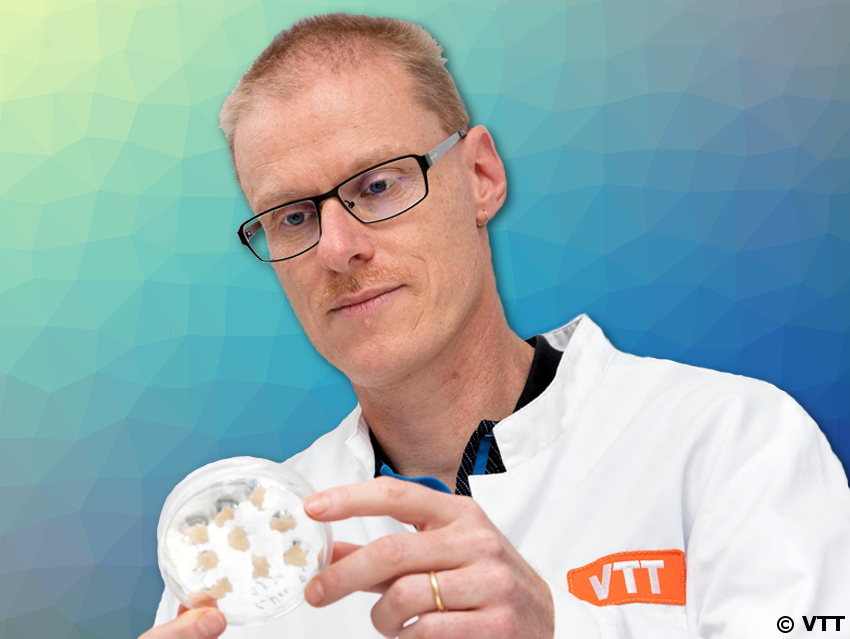To celebrate the 5th anniversary of ChemistryViews, for the next five months on the 21st of each month we will highlight great pieces of content from the archives along with newly created features. This month we start with coffee.
► Browse through a growing compilation of articles on coffee and chemistry
Coffee
The annual consumption of coffee is increasing worldwide. 2,500,000,000 cups of coffee are drunk per day worldwide (2013) [1]. In 2014, Finland was the world’s leading coffee consuming country (average per capita cups per year) followed by Sweden, The Netherlands, Germany, and Norway [1]. Brazil is the world leader in global coffee production and has been the industry leader for the past 150 years. Other leading producing countries include Vietnam, Indonesia, Colombia, and Ethiopia.
Coffee is also an increasingly hot topic in research. From 1990 to 2000 the number of research articles related to coffee increased by about X % (23 to123 articles) and from 2000 to 2014 about X % (123 to 509 articles) [2].
What Makes Coffee so Fascinating?
For chemists the answer to this is the exciting chemistry involved. It starts with the natural substances of the coffee bean, continues with the chemical changes induced by the roasting and grinding processes, and reaches the stages of brewing methods.
Already espresso [8] and its crema [9], which marks the quality of an espresso, offer many fascinating science related details. For example, addresses espresso 3000 taste buds on the surface of the tongue with respect to the four taste qualities sour, salty, sweet, and bitter.
What are Research Topics?
So far, more than 1000 compounds have been identified in coffee. Research is ongoing to identify coffee compounds and to understand how and when they are produced and what effects they have.
In a high-value market, food-fraud by adulteration or contamination is increasing. The high-price of coffee, growing demand, and coffee shortages may increase the chance of having unwanted extra ingredients in it to increase profits. Such extra ingredients can include corn, cocoa seeds, soybean, and even clumps of earth. As they are visually hard to identify, analytical methods are needed to detect the purity of coffee [3]. Another possible food-fraud is adulteration or contamination with coffee beans of inferior quality. Analytical methods are being developed to differentiate coffee samples from one country against all others [4] and to ensure high quality coffee.
Another large area of interest focusses around the question: “Is drinking coffee healthy?”. Countless studies produced controversial results. However, despite the occurrence of contaminants in coffee such as acrylamide, furan, or ochratoxin A [7], newer studies prove the positive health effects of moderate coffee consumption (about 1–4 cups per day). Coffee, for example, was associated with less calcium deposits in the coronary arteries and, therefore, may help reduce coronary heart diseases [5]. Coffee lowers the level of abnormal liver enzymes such as aminotransferase (ALT), aminotransferase (AST), alkaline phosphatase (ALP), and γ-glutamyl transaminase (GGT) [6].
Other topics include effects of climate change on agriculture.
References
[1] The Statistics Portal (accessed June 2015) http://www.statista.com/statistics/277135/leading-countries-by-coffee-consumption/
[2] ISI Citation Index
[3] Veronika Belusa, What’s in Your Coffee?, ChemistryViews.org 2014.
A test based on chromatography could detect unwanted fillers in coffee
[4] Bernhard Meier, NMR Spectroscopy To Check Coffee Beans, ChemistryViews.org 2015.
[5] Antonia Niedobitek, Is Coffee Good For Your Heart?, ChemistryViews.org 2015.
[6] Veronika Belusa, Coffee Promotes Liver Health, ChemistryViews.org 2014.
[7] Elke Richling, Michael Habermeyer, Eine Nutzen-Risiko-Betrachtung, Ist Kaffeetrinken gesund?, Chem. Unserer Zeit 2014, 48, 12–20. DOI: 10.1002/ciuz.201400643
and Is Drinking Coffee Healthy?, ChemViews Mag. 2014.
Does daily consumption of coffee, one of the world’s most widely consumed foods, contribute to health or not?
[8] Klaus Roth, Espresso – A Three-Step Preparation, ChemView Mag. 2010. DOI: 10.1002/chemv.201000003
Klaus Roth proves that no culinary masterpiece can be achieved without a basic knowledge of chemistry
[9] Clever Picture: Espresso Crema, ChemViews Mag. 2014. DOI: 10.1002/chemv.201400062
Why does an espresso need a crema and what should it look like?
Articles on Coffee and Chemistry
 |
 |
 |
 |
 |
 |
|
Espresso – A Three-Step Preparation Klaus Roth proves that no culinary masterpiece can be achieved without a basic knowledge of chemistry Focus Article |
Why does an espresso need a crema and how should it look like? Clever Picture |
50th Anniversary: Supercritical Fluid Extraction Kurt Zosel, Germany, first patented supercritical fluid extraction in 1963 |
NMR Spectroscopy To Check Coffee Beans Nuclear magnetic resonance spectroscopy (NMR) identifies if coffee only contains beans from one region |
Why does an espresso need a crema and what should it look like? Video |
Coffee’s Antioxidant Properties Drinking coffee can be good for your health, as shown by a study of chlorogenic acid-enriched instant coffee |

Interview with Heiko Rischer, VTT Finland, about the potential of cellular agriculture for sustainable food production
- See more articles that explore ChemistryViews


